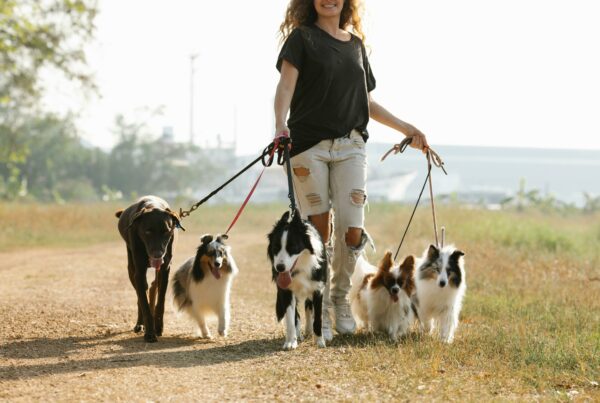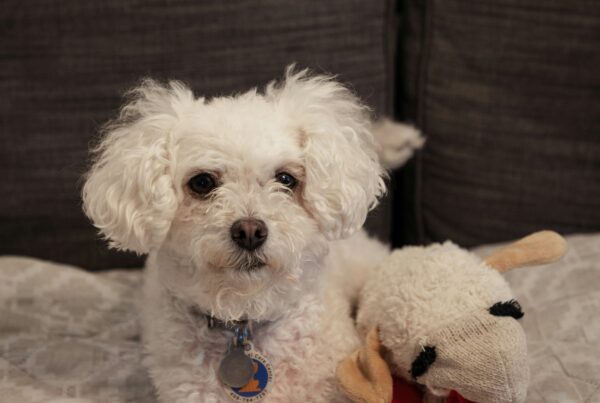Helpful Tips For Dog Walking
For those who enjoy dog walking, there is nothing worse than a dog that pulls and lacks manners on a leash. This is one of the biggest problems that many dog owners face which unfortunately often leads to owners giving up on walking the dog at all.
Establish Your Leadership Role
To correct issues such as dog walking, you must first develop a bond between you and your dog. “Bond” means your dog’s understanding of the role you have within the pack. Your role should be “leader” and your dog’s role should be “dog”. Understand that dogs respond best to a pack leader that remains relaxed yet assertive. Without this understanding between owner and dog, control will be a hard task to achieve.
Many dog owners unknowingly make the mistake of providing their dog with the “alpha dog” position by confusing discipline with being mean. They think that by enforcing boundaries they are hurting their dog, when in truth it is the complete opposite.
Remember, dogs were first bred to do a job whether it was guarding, herding or retrieving and they relied on their master to tell them what to do next. Although most domestic dogs are no longer working dogs, in order to be completely satisfied and content, they still need this structure.
Accepting The Role As Alpha Dog
As dog owners, we must first train ourselves to believe that we are indeed the leader, the alpha dog. It is critical that we understand the importance of this since dogs easily sense how we feel. Bottom line, if you don’t believe it, your dog won’t either! Although dog owners should never give up their position in the pack, surrendering their role to a more dominant breed must never happen.
Dogs that are laid back and easy going often don’t require much training. Infact, they seem to walk well on a leash without being taught anything at all. On the other hand for those dogs that are strong willed, training must continue until these results are applied.
The point is that no device in the world will work better than your own behavior when it comes to dog walking or training your dog to do anything. It is absolutely true that force is NEVER NECESSARY when training your dog. Repetition, trust, body language, remaining calm and relaxed are the factors in achieving successful results with any dog training.
Do You Believe?
Once you have conditioned yourself to accept and actually believe your place in the pack, then move on to applying it. Again, keep in mind that dogs interpret what you are feeling by the energy that you release. So when you release a calm, positive and assertive energy, they will pick up on it.
Lets Walk
As your dog’s trainer, fully understand and accept the following:
1. Dog walking develops a leadership bond for you and your dog.
2. He needs this daily exercise and this should never be taken lightly.
3. Dogs learn about their surroundings by sniffing, allow them to do this.
* First decide on a style of dog walking leash. Many established dog trainers prefer a short leash like a Martingale Show Lead for dog walking. These leashes are like the ones used in most large dog shows like the AKC or Westminster show. A loop goes around the dog’s head behind the ears, not around the neck. This gives the trainer ultimate control of the dog by gently pulling up on head if necessary.
* Before placing the leash on your dog, make sure he’s calmly sitting in place. Never place a leash on a out of control dog. This only encourages bad behavior.
* Believe it or not, but how you enter or exit the house also sends a signal to your dog. As the pack leader, you must enter and exit the home first with the dog behind you or beside you, but never in front of you. You should also use this method if you already have a dog and brought another dog into the home. In order for the original dog to maintain alpha status, that dog must always come first whether it’s eating, letting in or out, placing a leash on, etc.
* Now, the leash should always be held loosely with your dog by your side. If your arm is extended holding a taunt leash with the dog out in front of you, you need to address this issue with your dog immediately and consistently until it sinks in. Whether it’s by a particular sound or an assertive (not aggressive) touch, draw your dog’s attention back to you “the leader”. Remember, you want to release that calm “I’m in control” energy so that your dog gets the correct signal from the other end of the leash.
* After exercising and walking for awhile, always allow the dog to smell and enjoy the things around him.
* Once you return home, you’ll want to reward your dog’s good behavior with love and one-on-one attention. This is a critical message that you return to your dog for a “job well done”.
Try getting your feelings across to your dog with actions vs words. Develop a body language and sounds that your dog will identify with what you expect from him.
This article was taken from http://www.old-dog-treats-and-rawhide.com/dog-walking.html and modified by New York Dog Nanny.



